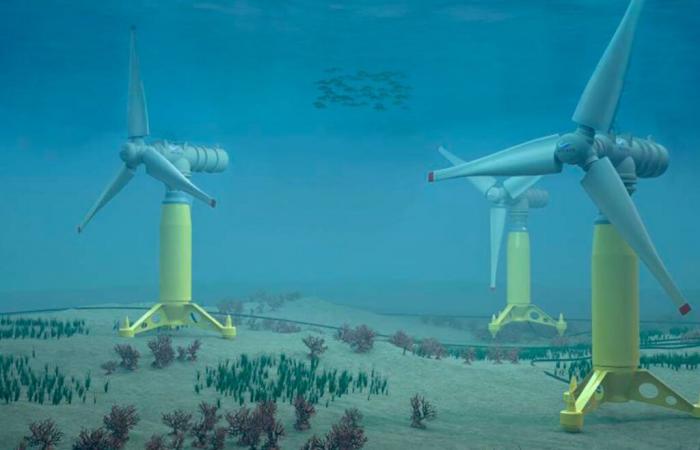Renewable marine energy is taking a leap forward thanks to two French tidal turbine projects. These innovative initiatives have just received a substantial grant of 51 million euros from the European Union Innovation Fund. This financial aid marks a decisive turning point for the development of tidal energy in France.
Raz Blanchard: cradle of tidal innovation
Raz Blanchard, located off the Normandy coast, is recognized as one of the the most powerful sea currents in Europe. It is in this exceptional site that two ambitious projects will see the light of day:
- Flowatt, planned for 2026
- NH1, scheduled for 2028
These initiatives are supported by two major players in the sector: HydroQuest and Normandie Hydroliennes. Their goal? Demonstrate the economic viability of large-scale tidal energy.
The NH1 farm particularly stands out with a installed power of 12 MW. Equipped with Proteus AR3000 turbines, it promises to provide up to 33.9 gigawatt hours (GWh) par anor the equivalent of the consumption of around 15,000 inhabitants. These turbines, built in Cherbourg, are considered the most powerful in the world in their category.
European support in the face of French hesitation
While the European Union shows clear support through this subsidy, the French government's position remains ambiguous. A ten parliamentariansincluding Anna Pic, MP for Manche, called on Prime Minister Michel Barnier to demand a coherent national strategy.
The stakes are considerable:
- Define a clear regulatory framework
- Organize a public debate on the future of tidal energy
- Establish ambitious and realistic production goals
Historically, production targets of 1 GW in 2030 and 5 GW in 2050 had been mentioned. On the other hand, the absence of concrete strategic decisions is slowing down the development of this promising sector.
Challenges and prospects for French tidal energy
The development of tidal energy in France faces several obstacles. The following table summarizes the main challenges and opportunities:
| Challenges | Opportunities |
|---|---|
| Lack of clear political support | Significant energy potential |
| Absence of large-scale calls for tenders | Innovative and competitive technology |
| Delays in energy planning | Creation of local jobs |
Companies like Sabella, with its facilities near the island of Ouessant, demonstrate the technical potential of tidal turbines. On the other hand, without a framework conducive to commercial deployment, the sector struggles to reach full economic maturity.
The competitiveness of tidal energy depends largely on its deployment scale. The Flowatt and NH1 projects represent a crucial step in validating the economic viability of this technology and paving the way for larger installations.
Towards a sustainable energy future
Tidal energy offers a unique perspective in the French energy mix: a predictable and renewable electricity production. Unlike other intermittent energy sources, marine currents present an appreciable regularity for the management of the electricity network.
European support for the Flowatt and NH1 projects could catalyze a change of approach at national level. It is necessary for France to seize this opportunity to assert its technological leadership in the field of marine renewable energies.
The future of tidal energy in France will depend on the government's capacity to develop a integrated energy strategyrecognizing the unique potential of this technology. The next political decisions will be decisive in transforming these pilot projects into a mature industrial sector, capable of significantly contributing to the country's energy transition.






